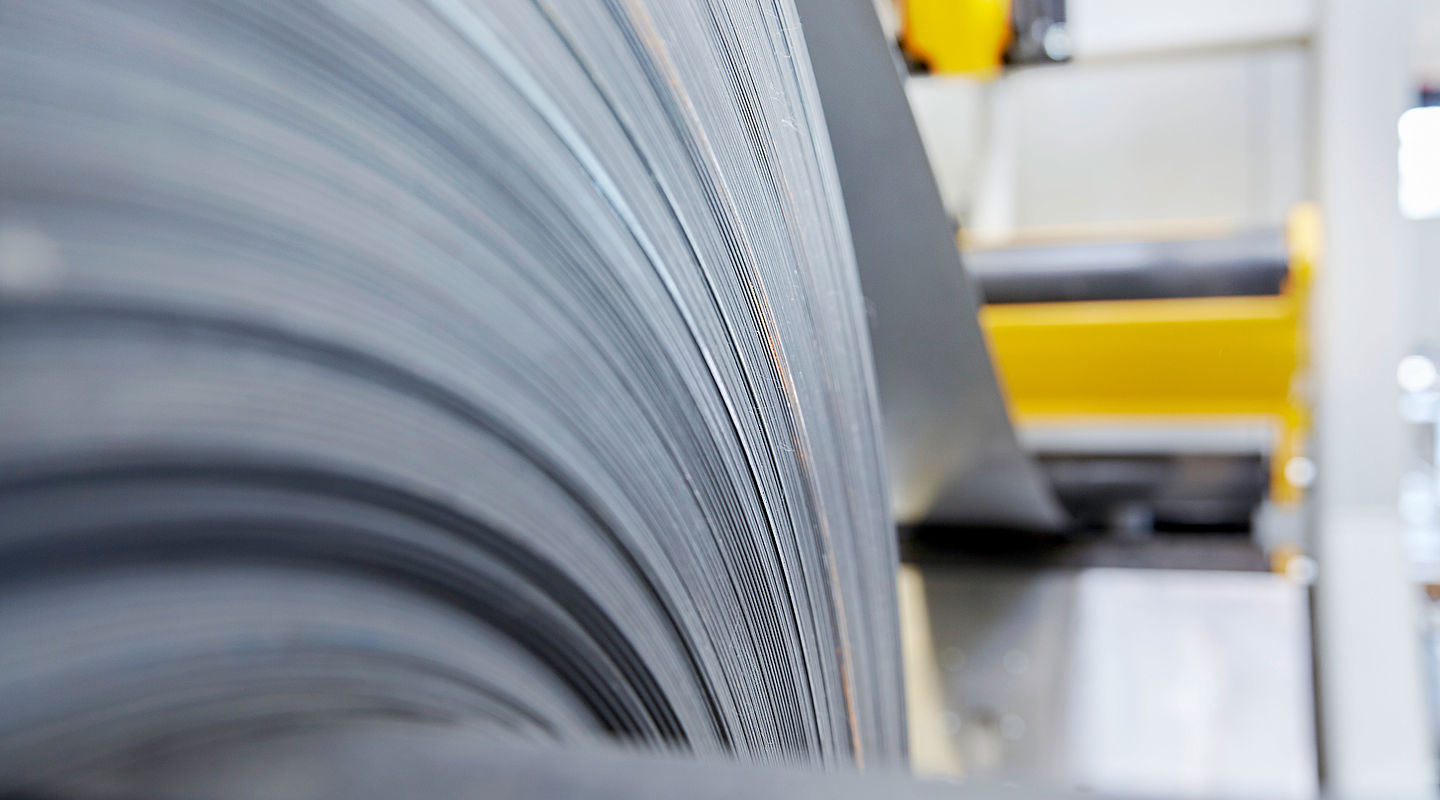As soon as the sheets leave the rolling mill, the most common coil defect is already foreseeable: coil curvature. Because as practical as coiling the sheets is for transport in large quantities, the curvature interferes with further processing operations. This is because the sheet is no longer as flat as it needs to be for precise processing.

Coil curvature is basically standard, but must be eliminated
In coil curvature, the strip is curved in the longitudinal direction due to the winding process. This error actually always occurs with coils. But other deviations are possible. With narrower sheet metal strips, it can be transverse curvature, i.e. a curvature transverse to the strip direction. Or torsion can occur, in which case the sheet metal strip is twisted in itself.
In wide plate strips, flatness defects such as coil breaks (waves across the entire width of the plate), edge waves, one-sided and center waves occur.
Apart from defects in the starting material, mechanical or thermal effects can also introduce stresses into the sheets. Normally, these are not coils but blanks or sheet metal parts. These effects have their causes in the cutting of the sheets.
The most important leveling techniques
Learn about the different leveling techniques and how new methods can help to optimize the leveling process in our free guide.
Separation processes can also cause defects in the sheet metal
Especially thermal processes such as laser, plasma or oxyfuel cutting must be kept a close eye on here. This is because a great deal of heat is generated where the cutting beam meets the material. This creates a very large temperature gradient, which in turn leads to stresses. But mechanical processes such as cutting or punching can also introduce residual stresses into the sheets.
Defects in the sheet metal and also the residual stresses can impair the result in sheet metal processing. This is because a straight workpiece that meets the required tolerances cannot be produced from a warped sheet in a scheduled process. Experienced employees know how - within certain limits - they can still achieve usable results even with poor material. However, this does not apply to automated production, where a lot of scrap quickly accumulates.

Leveling eliminates coil defects and residual stresses in sheet metal
Both coil defects and residual stresses in the sheets can be eliminated by straightening. Straightening machines straighten the sheets with the aid of rollers, eliminating both defects and stresses. Two types of equipment can be distinguished: Strip straighteners are used to correct sheet metal strips, while part straighteners straighten individual parts or blanks. Straight strip levelers offer a wide range of options for adjusting the leveling rolls and precisely counteracting coil defects.
Leveling then has a positive effect on the subsequent machining processes: If the sheets contain as few residual stresses and defects as possible, bending or milling becomes more precise. Welded assemblies can also be assembled much faster, and time-consuming reworking is completely eliminated.



